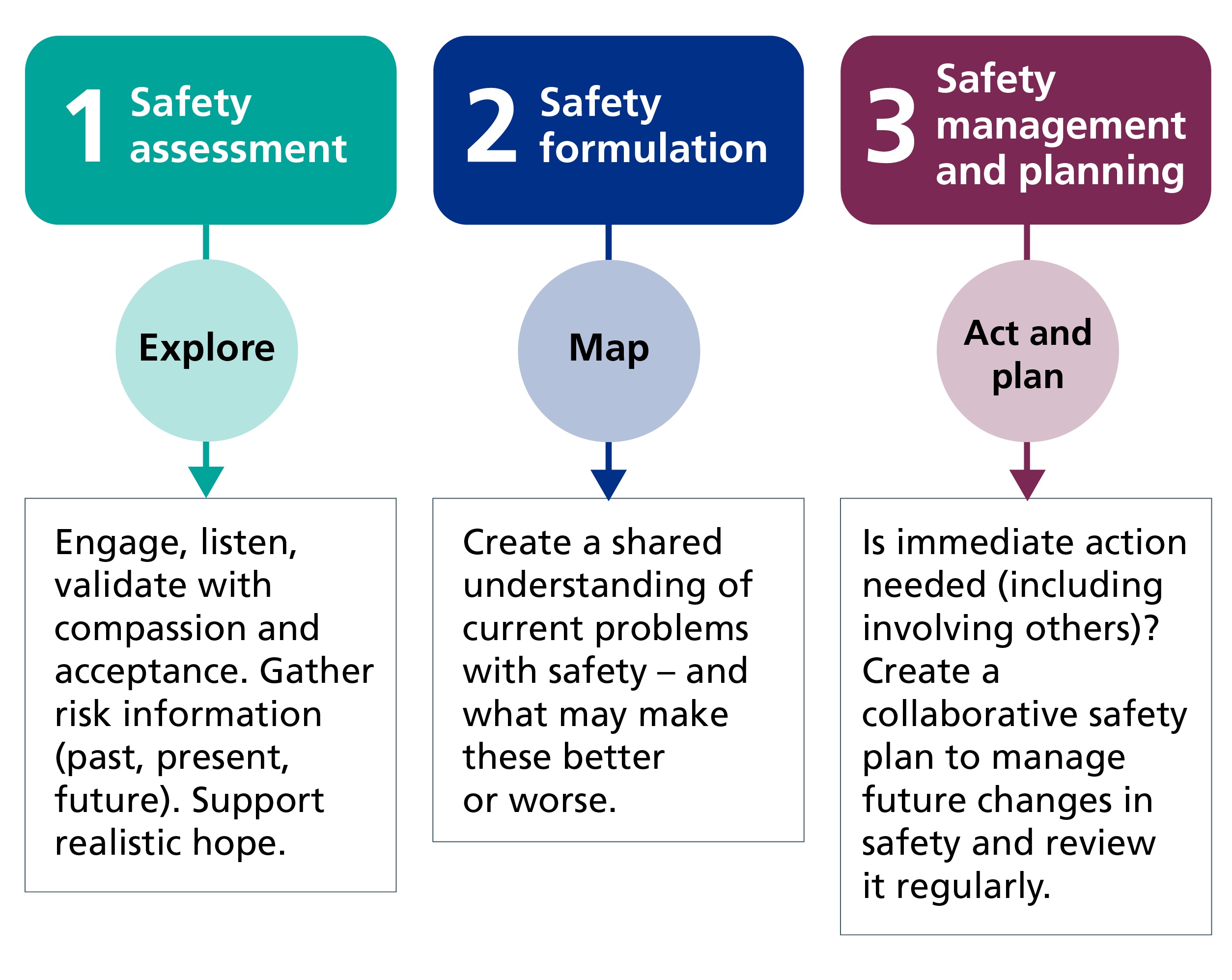Staying safe from suicide: Best practice guidance for safety assessment, formulation and management
Staying safe from suicide: Best practice guidance for safety assessment, formulation and management supports the government’s work to reduce suicide and improve mental health services. It applies to all mental health practitioners in England who work in community and inpatient settings.
It encourages a more person-focused and holistic approach to safety planning. This is instead of relying on risk prediction tools, which aren’t always accurate because suicidal thoughts can change quickly. It suggests understanding each person’s unique situation and focusing on how to keep them safe.
